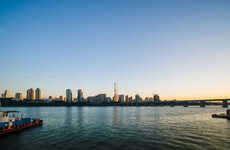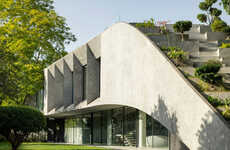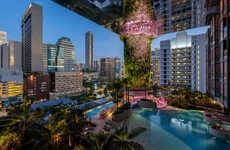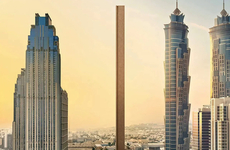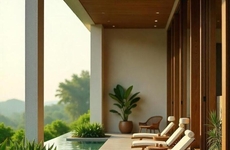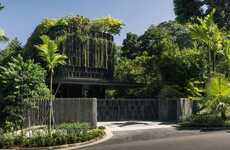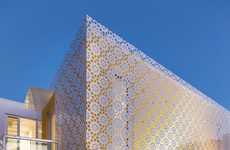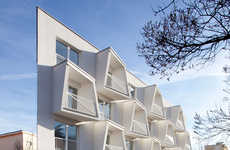
The Clearpoint Residencies is a Lush Vertical Garden Building
Laura McQuarrie — February 11, 2014 — Eco
References: clearpointresidencies & archdaily
Clearpoint Residencies in Rajagiriya, Sri Lanka is set to be the world's tallest residential vertical garden building and a set a precedent for other sustainable buildings of the future.
The design comes from Milroy Perera Associates and Mäga Engineering, and its exterior has notable features like solar panels that will provide electricity and the lush green plants that coat the building will regulate temperatures and noise. The placements of windows are optimized for cross-ventilation and are out of the way from direct access to sunlight, which significantly reduces the need for air conditioning inside the apartments. This was achieved by expanding the terrace space, which also gives occupants more space to enjoy outdoors.
The building is set to have 46 floors, a total of 164 apartments and a completion date in 2015.
The design comes from Milroy Perera Associates and Mäga Engineering, and its exterior has notable features like solar panels that will provide electricity and the lush green plants that coat the building will regulate temperatures and noise. The placements of windows are optimized for cross-ventilation and are out of the way from direct access to sunlight, which significantly reduces the need for air conditioning inside the apartments. This was achieved by expanding the terrace space, which also gives occupants more space to enjoy outdoors.
The building is set to have 46 floors, a total of 164 apartments and a completion date in 2015.
Trend Themes
1. Vertical Garden Building - There is an opportunity to create more green buildings that incorporate vertical gardens to reduce carbon footprint and promote sustainability.
2. Solar-powered Buildings - As the need to reduce carbon footprint increases, there is an opportunity to design more sustainable buildings with features like solar panels to produce renewable energy.
3. Cross-ventilated Buildings - Designing buildings with optimized window placements for cross-ventilation can lead to energy savings and a more comfortable living space for occupants.
Industry Implications
1. Real Estate - There is an opportunity for real estate developers to incorporate sustainable features in their buildings like vertical gardens, solar panels and optimized window placements for cross-ventilation to attract eco-conscious consumers.
2. Architecture - Architects can design sustainable buildings with features like vertical gardens, solar panels and optimized window placements for cross-ventilation to reduce carbon footprint and promote sustainability.
3. Construction - Construction companies can leverage sustainable building practices and technology to build green buildings that promote sustainability by incorporating features like vertical gardens, solar panels and optimized window placements for cross-ventilation.
6
Score
Popularity
Activity
Freshness

